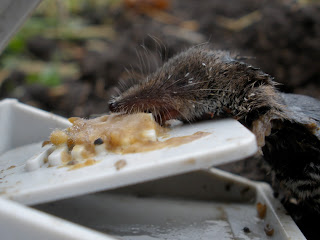"Food not Lawns!"
Since moving off the farm on rural Orcas Island and back to my hometown of Portland, OR I have been re-inspired by urban agriculture. While on the island I would travel through Crow Valley with its vast expanses of pasture, a greenhouse here, Maple Rock Farm there. Sheep and cows grazing, a horse in a stable with an enormous barn as a backdrop. Extremely picturesque I might add.  | ||||||||
| View of Crow Valley from Turtleback Mtn. |
As I continue to embrace city life it is my goal to get-in, on the urban-ag action. I was fortunate enough to take on a few edible landscaping projects in the summer of 2010.
One fun project was growing food for a woman who cleared out her backyard lawn to make way for a veggie patch in 2009. My goal for 2010 was to grow as much food as possible in the space provided, while keeping it asthetically pleasing.
This is more or less what I had to work with...
 |
| A great "U" shaped raised bed for a backyard. |
 |
| Perennials line the fence and garage. |
In these photos you can see the veggie plot in the spring. Just like on the farm, I used Remay and put a mini-cloche during the cooler months of spring.
By the time summer hit, I let it all fly.
Things filled in quite nicely by mid summer. I found the hardest part of this gardening project to be quantifying the size of my successions for salad greens appropriately. My farming background had me error on the side of too much. Sometimes, way too much.
I took on another edible landscaping project next door. In this case the client wanted me to create the space and they would grow their own veggies. Fortunately the yard had this perfect little nook to put two large raised beds. One for the upstairs folks and one for the downstairs folks. Here is a little before and after...
 |
| Before. |
 |
| After. |
Thanks for taking a look at a little edible landscaping by Edible Horizons. Let any of your friends in the Portland area know that I am available for design, implementation and/or consultation for their own veggie patches in 2011.
Take care,
Kji



